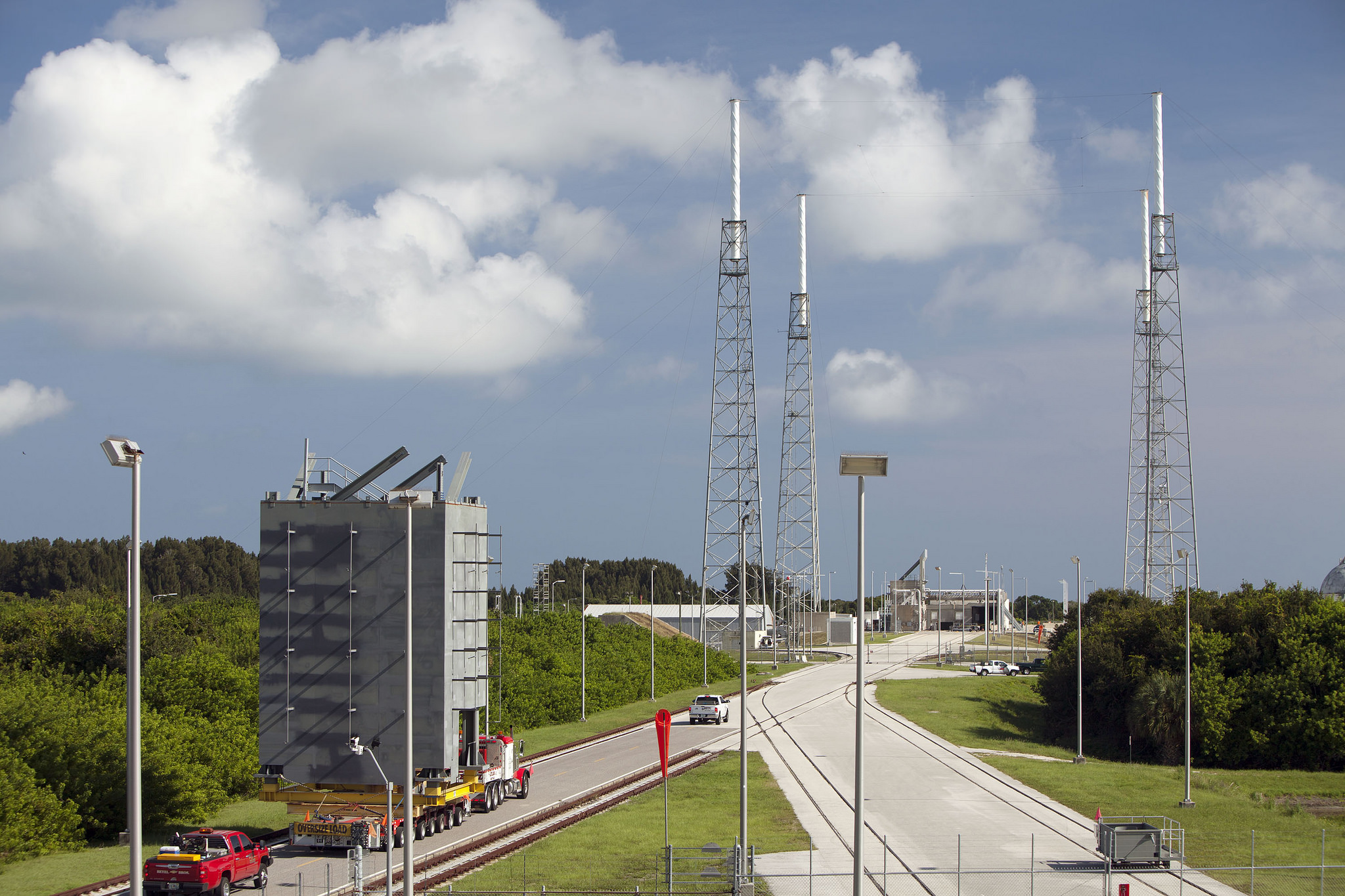
In 2017 the United States will finally see the return of American human spaceflight to our own shores, courtesy of SpaceX and Boeing and their Dragon and Starliner crew capsules. With two years left before an expected inaugural launch there is still a lot of work to be done, but one of the most visible signs of progress at Cape Canaveral Air Force Station in Florida is the new Boeing/ULA (United Launch Alliance) crew access tower being constructed just a few miles down the road from ULA’s Atlas Space Launch Complex-41 (SLC-41), which is where Boeing’s CST-100 Starliner flights will take place from atop ULA’s workhorse Atlas-V rocket.
The entire tower will be erected at SLC-41 over the next several weeks, rising like an erector set, and it’s the first of its kind intended for a vehicle that will carry humans into space from Cape Canaveral Air Force Station since the one built at Launch Complex 34 for the Apollo missions in the 1960s. The fixed service structures used for crew access for NASA’s 30 years of space shuttle launches from Launch Complex 39A and 39B were built in the late-1970s at Kennedy Space Center (KSC), which neighbors the Cape at the north side of Merritt Island.
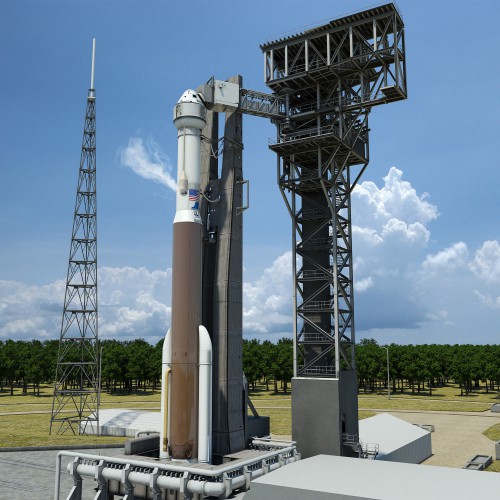
The first tier segments of the new SLC-41 Atlas-V commercial crew tower have been rising above the Cape’s flat landscape all summer, and, when finished, the completed crew access tower will stand over 200 feet tall.
“Safety of our NASA astronauts and ground crews is at the forefront as we construct the crew access tower,” said Mike Burghardt, the launch segment director for Boeing’s Commercial Crew Program. “This is an exciting time in space. The crew tower embodies the fact that very soon we’ll be launching crew missions again from the Space Coast.”
The tower will be comprised of seven major tier segments, or levels, and each will measure about 20 foot square and 28 feet tall. Building them away from the pad allows ULA to maintain their busy Atlas launch manifest, which will launch again as soon as Oct. 2, and also allows for foundation work for the tower at SLC-41 to move forward at the same time the tower itself is being built. Cranes move the largest pieces into place, while welders and riveters connect the thick steel beams together to form the central spars of the tower.
Once the seven tiers are built and outfitted with everything (except wire harnesses and elevator rails), they will be trucked over to SLC-41, one by one, and stacked between launches. The first two tiers arrived at the launch pad earlier this month.
The tower will then be outfitted with all the wiring, lines, support facilities, stairs, and elevators the astronaut crew and ground support staff will require. A set of slidewire baskets will be ready to help anyone on the tower to evacuate in a hurry in the unlikely event of an emergency as well.
“After the tower buildup comes the extensive work to outfit the tower with over 400 pieces of outboard steel that have to be installed,” said Howard Biegler, ULA’s man in charge of the company’s Human Launch Services division. “That takes much longer, and will be done in parallel with the arm buildup. The completely integrated and tested crew access arm and walkway should be brought out to the launch site around May 2016, with all the site construction, testing and certifications done by September 2016.”
Although there won’t be any crewed flights in 2016 anymore, ULA designed their game plan from day one to support a December 2016 launch (as was NASA’s intention a couple years ago). They have never slipped off of their September 2016 completion date.
“This is an extremely exciting time,” said Rick Marlette, deputy project manager for ULA’s launch pad construction. “It’s great to be doing the construction after so many years and we’re bringing Atlas back to its heritage from the Mercury Program of flying astronauts into space.”
In the meantime, at ULA’s 1.6-million-square-foot Decatur, Ala., facility, the company has already started work building the two Atlas-V rockets that will launch Boeing’s CST-100 Starliner space capsule on its first uncrewed and crewed test flights, both scheduled for 2017. Both rockets, each designated as AV-073 and AV-080, will be the first to be certified by both NASA and ULA to fly people to and from the International Space Station.
Boeing also recently held a grand opening event to officially mark the beginning of CST-100 Starliner operations at the company’s new 50,000-square-foot Commercial Crew and Cargo Processing Facility (C3PF) at Kennedy Space Center in Florida, where work is well underway building a Starliner pathfinder test article to certify the vehicle’s design before putting astronauts onboard for flights to and from the ISS.
SpaceX and Boeing both received NASA contracts to fly astronauts to and from the ISS with their Dragon and Starliner crew capsules. Boeing, however, received a much larger piece of the multi-billion-dollar pie, with $4.2 billion for Boeing and $2.6 billion for SpaceX. Boeing also received the first of up to six orders from NASA to execute a crew-rotation mission of Starliner to the ISS earlier this year, although NASA emphasized that the order does not necessarily imply that Starliner will fly ahead of the SpaceX Crew Dragon, and that “determination of which company will fly its mission to the station first will be made at a later time.”
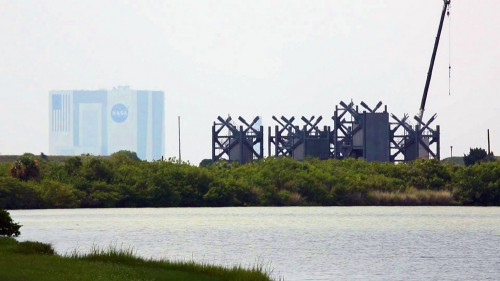
Be sure to “Like” AmericaSpace on Facebook and follow us on Twitter: @AmericaSpace




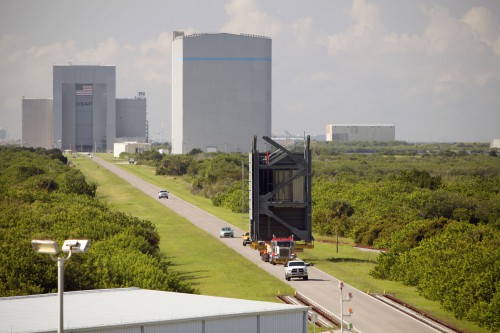
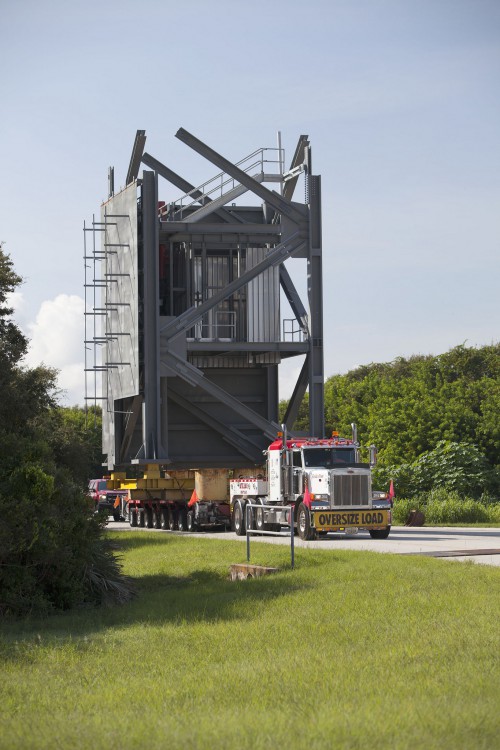
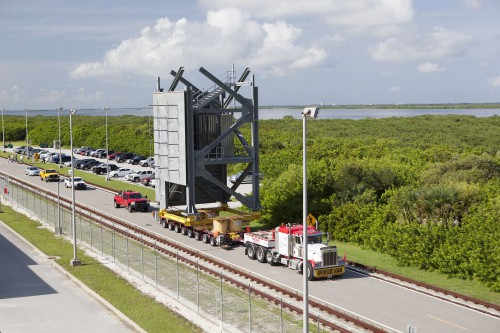
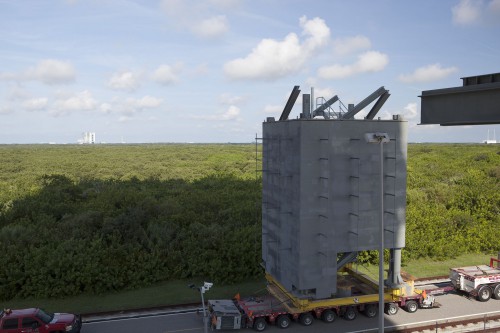
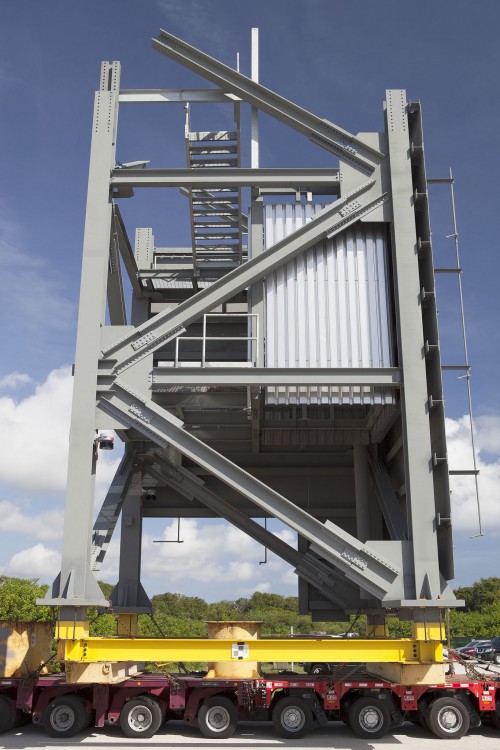
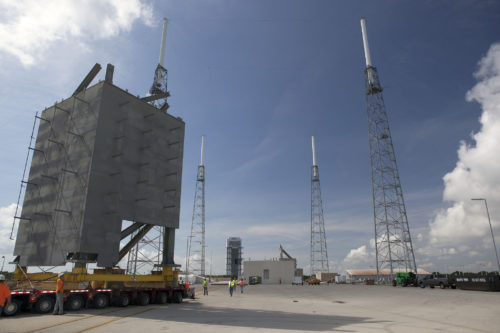
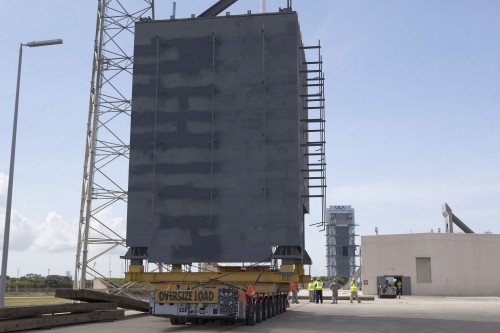
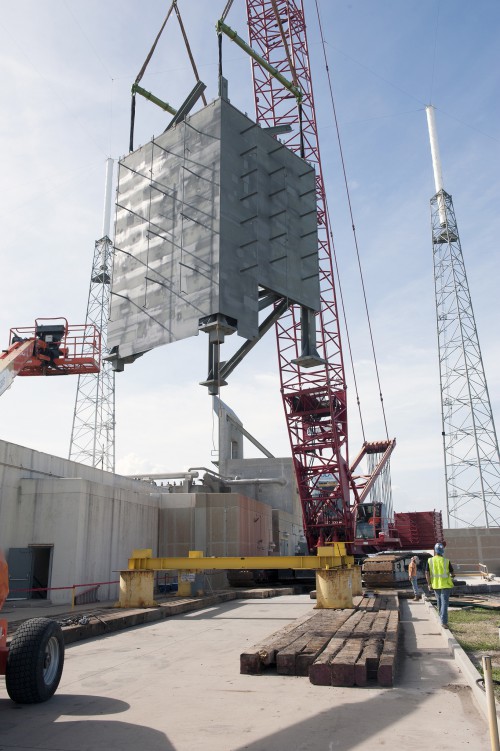
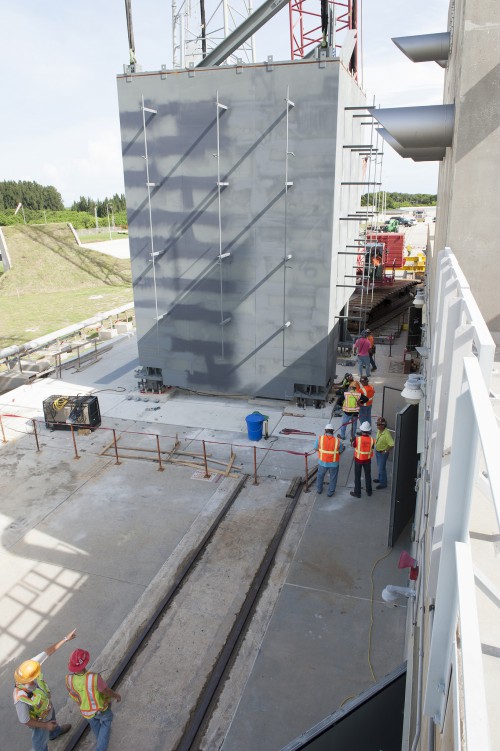
Exciting to see this progress as the Starliner’s first flight slowly gets closer.
Has ULA set a timeline for the future of this pad, related to the phase out of Atlas V and its replacement with Vulcan?
“Has ULA set a timeline for the future of this pad, related to the phase out of Atlas V and its replacement with Vulcan?”
Tim, perhaps the “the phase out of Atlas V” is not yet a sure thing.
Kerolox rocket engines have their own real advantages and a new kerolox launcher may be used in launching a small version of the robotic MX-1 lander to the Moon. See the SPACENEWS article ‘Moon Express Buys Rocket Lab Launches for Lunar Missions’ by Jeff Foust on October 1, 2015.
And also see the SPACENEWS Op-ed article, ‘Ukraine Working on Low-risk Rocket Engine Solution’ by Mike Bowker and John Isella on September 28, 2015 where it is noted, “During the past five years Yuzhnoye, the leader of the Ukrainian space industry, has been actively working on a new first-stage liquid rocket engine family including the Guardian 250 (GU250), a formidable engine for production in the United States.”
And, “Combining two GU250 engines into a cluster would provide 500 tf for application in the first stages of Atlas 5, Antares, the Space Launch System, and perhaps other U.S. launch vehicles.”
Current, and possibly larger and more powerful, versions of Rocket Lab’s new and unique Rutherford kerolox rocket engine, along with an American built GU250 kerolox rocket engine offer lots of real and interesting possibilities for current and future cost-effective kerolox based reusable launchers and boosters.